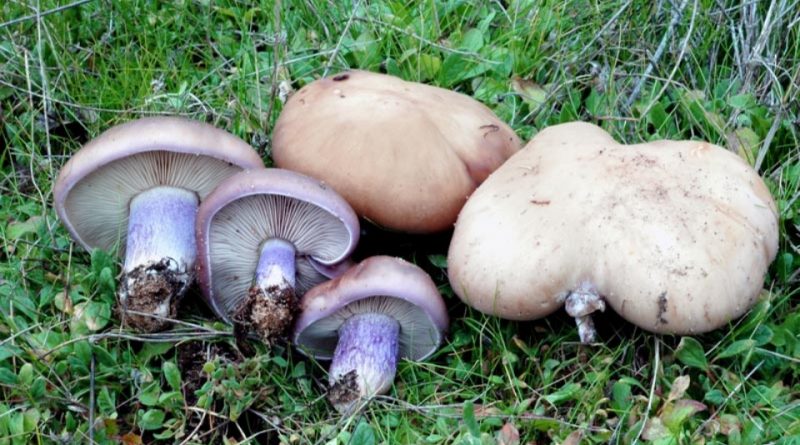Lepista personata
Lepista personata
The Lepista personata (Lepista personata (Fr.Fr.) Cooke) is a basidiomycete mushroom belonging to the Tricholomataceae family.
Systematic –
From the systematic point of view it belongs to the Domain Eukaryota, Kingdom Fungi, Phylum Basidiomycota, Class Basidiomycetes, Order Agaricales, Family Tricholomataceae and therefore to the Genus Lepista and to the Species L. personata.
Etymology –
The term Lepista comes from the Greek λεπιστός lepistós peeled, meaning bare, peeled: fungus devoid of particular ornaments. The personified specific epithet derives from persōna theatrical mask: masked, mystified, counterfeit, previously mistaken for something else.
Geographic Distribution and Habitat –
The Lepista personata is a species that appears late as it holds the cold very well, so it usually fructifies between November and winter. Its natural habitat is the mountain meadows; prefers the bushes and appears in broad-leaved woods.
Recognition –
The Lepista personata is recognized for the hat of 8-10 cm in diameter which is initially obtuse and then hemispherical and convex and finally flat-depressed; It has a wavy edge, often also involute, of a hazelnut-colored or gray-caffellatte, which with age becomes lighter and pinkish-bleached with shades of gray.The lamellae are very dense, of white to light-gray color, which over time assume a rosy color because of the spores. The stem is stocky and cylindrical which is more full-bodied at the base, rather fibrous with evident shades of purple or lilac. The flesh has an elastic consistency, whitish with lilac hues, fruity, intense and mild and delicate taste.The microscope shows spores of pinkish color in the skin.
Cultivation –
The Lepista personata is not cultivated.
Uses and Traditions –
This late autumn mushroom as an aspect reminds the naked Lepista even if it has a completely different livery. In addition to the naked Lepista, other species with which it could be exchanged are some species of the genus Cortinarius of violet or lilac that have, in general, however, “rafanoid” odor. It is however a fungus of fair edibility.
Preparation Mode –
The Lepista personata can be prepared and cooked in a manner similar to other lepis with all the precautions taken for these mushrooms.
Guido Bissanti
Sources
– Wikipedia, the free encyclopedia.- Cetto B., 2008. The mushrooms from life, Saturnia, Trento.- Pignatti S., 1982. Flora of Italy, Edagricole, Bologna.- Conti F., Abbate G., Alessandrini A., Blasi C. (edited by), 2005. An annotated checklist of the Italian vascular flora, Palombi Editore.
Warning: Pharmaceutical applications and alimurgical uses are indicated for informational purposes only and do not in any way represent a medical prescription; there is therefore no liability for their use for curative, aesthetic or food purposes.


